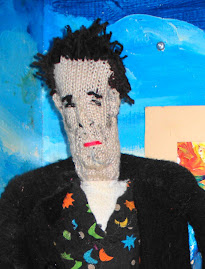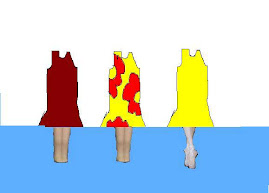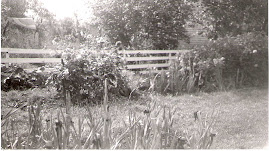Ying Gao, Science is Fiction, 2013, silver- coated medical cotton. Photo: Dominique Lafond Image provided by Textile Museum of Canada (TMC) used with permission
________________________________________________________
Fashioning the Intangible: the conceptual clothing of Ying Gao
May 7, 2014 - September 1, 2014
The Eternity Code: Archaeology, Textiles and Preservation
June 11, 2014 - September 21, 2014
Curators: Shauna McCabe, Executive Director Natalia Nekrassova,Curator, Collections and Research, Roxane Shaughnessy, Curator, Collections and Access and Sarah Quinton, Curatorial Director
Textile Museum of Canada
55 Centre Avenue, Toronto Ontario
__________________
Cairo Under Wraps: Early Islamic Textiles
June 21, 2014 to January 25, 2015
Curators: Anu Liivandi, Assistant Curator (Textiles & Fashions), Karin Ruehrdanz, Senior Curator (Islamic Decorative Arts), Lisa Golombek,Curator Emeritus (Islamic Art) Retired
Patricia Harris Gallery of Textiles & Costume, Level 4
Royal Ontario Museum
100 Queen's Park, Toronto, Ontario
___________________
Reiko Sudo + NUNO, Textiles from Japan
July 11 to November 22, 2014
Curator: Alan Elder of the Canadian Museum of History
Norah Rosamond Hughes Gallery
Mississippi Valley Textile Museum
3, Rosamond St. E. Almonte, Ontario
____________________________
Mantel panel fragment with figures wearing hats and tunics, Peru, 1350 to 1540 CE, cotton and camelid hair, T2005.17.7. Gift of Pascal Muzard and Nieves Carrasco, Image provided by TMC used with permission
___________________________________
Eternity Code: The Eternity Code: Archaeology, Textiles and Preservation, an exhibition at the Textile Museum of Canada in Toronto, beings with a time line. The following findings date to the pre-Christian era of archaeological time:
-30,000 BCE Oldest evidence of textile fibres, discovered in Dzudzuana Cave, Georgia. (*a)
-27,000 BCE, Earliest evidence of woven textiles, found on clay figurines at Dolni Vestonice, Czech Republic.
-8,600-800 BCE Plant fibre basketry in practice, discovered in Guitarrero Cave in the Andes.
-3000 BCE Date of earliest complete garment found anywhere in the world, an Egyptian Linen Shirt.
-3000 BCE Evidence of domestication of fleece-bearing camelids (Llamas and alpacas) in highland Peru.
-1500 BCE earliest evidence of wool in Europe, recovered from Danish bog burial.
- 400 BCE Every weaving technique is present in pre-Hispanic Peru.
Eventually it brings us up to modern day with:
-2013 CE Discovery of the first unlooted imperial tomb of the Wari civilization that build South America’s earliest empire.
During the summer of 2014 in Ontario. there is an opportunity to see some of the oldest textiles in Museum collections in Canada and some of the most cutting edge industrially manufactured textiles. Along with The Eternity Code: Archaeology, Textiles and Preservation at the Textile Museum, there is: Cairo Under Wraps: Early Islamic Textiles at The Royal Ontario Museum. You can see the innovative cutting edge fashion textiles in Reiko Sudo + NUNO, Textiles from Japan at the Mississippi Valley Textile Museum in Almonte Ontario, and medical textiles in Fashioning the Intangible: the conceptual clothing of Ying Gao at the Textile Museum of Canada.
 |
| TMC: Fashioning the Intangible: the conceptual clothing of Ying Gao, installation shot, 2014. Photo: Jill Kitchener Image provided by TMC used with permission |
Naomi Polllock, an American architect, lives in Tokyo where she writes about design. In her essay, “A Short History of NUNO,” about the early training of NUNO founder Junichi Arai, she comments:
“The scion of a long line of textile producers, Arai hails from Kiryu, a historic textile manufacturing town northwest of Tokyo, where his family has lived and worked for generations. Although Aria toyed with a career in theatre, he remained home and entered the family mill. There he learned the nuts and bolts side of the industry and oversaw the production of cloth for both Western- and Japanese-style garments. This included a local version of Lame made by wrapping silk yarn with gold or silver threads- the birth of Aria's fascination with metallized fabrics”
 |
| Spatter Gloss, 1990, Designed by Reiko Sudo, Alloy spattering; 100% polyester. Image provided by MVTM used with permission |
 |
| Tiraz Fragment, Glazed mulham, ink, gold leaf, Iran, 10th century, 963.95.3. Image provided by the ROM used with permission |
 |
| TMC Flat Storage: The Eternity Code: Archaeology, Textiles and Preservation, installation shot, 2014. Photo: Jill Kitchener image provided by TMC used with permission [see below for more information] |
“How have textiles – among the most fragile and vulnerable artifacts – survived over centuries? Learn about the materials and techniques found in archaeological textiles and the conditions that have allowed for their survival through this exhibition of Peruvian and Coptic textiles from the Textile Museum of Canada collection… By their very nature, archaeological fibres are among the most fragile, extremely sensitive to environmental conditions. In 2013, the Textile Museum of Canada began research and development of new approaches to the conservation and storage of archaeological textiles to ensure enduring access to valuable artifacts of global heritage for future generations. Innovations introduced into the exhibition demonstrate the science of conservation as well as state-of-the-art advances in archaeological textile storage developed by the Textile Museum of Canada to provide the essential care and security of some of the most valuable and cryptic of human evidence”. (TMC exhibition overview)
Returning to the time line of events within the Christian era:
-1200 CE Irrigation canals transform Peruvian coastal desert allowing cultivation of cotton
-1476 CE Inca Empire established
-1534 CE Spanish conquer the Inca Empire in Peru
-1798 CE Napoleon Bonaparte and the French army invade Egypt
-1822 CE Jean-Francois Champolion deciphers the Rosetta Stone
-1911 CE Hiram Bingham rediscovers Machu Piccu, Peru
-1922 CE King Tutankhamen’s tomb discovered by Howard Carter
 |
| TMC Border fragment, Peru, 100 to 300 CE, camelid hair, T97X0010b, Image provide by TMC used with permission |
One of the oldest pieces on display in Eternity Code is a Border fragment, (TMC T97X0010b) from Peru (Nazca, 100 to 300 CE), made of Camelid hair. Its method of construction is described as cross-knit Looping. This particular technique was first diagrammed in Raoul D'Harcourt book Textiles of Ancient Peru and Their Techniques (1934) (in French) and is featured on the TMC, and Gardiner Museum’s 2010 co-presented web project “Cloth and Clay Communicating Culture” on the Government of Canada’s Virtual Museum website.This piece has been researched by independent scholars such as Rebecca Nelson Jacobs in her Archaeological Experiment: Re-creation of a Nasca Textile, Presidential Scholars Project” (*4) in 2004, under Dr. Bethany Usher from the Potsdam Anthropology Department. Jacobs attempted to create an archaeological replica of the border piece. Other pieces in the show have also been the subject of research projects instigated by the museum. For example, an Incan bag from Peru (1476 to 1534 CE) was also made of Camelid fibre using warp-faced, complementary warp, cross-knit looping was part of a materials study done in 2005. It is from the Opekar / Webster Collection (TMC T94.0999).
In 2005, curator Roxane Shaughnessay in partnership with researchers Dr. Christine White, Dr Andrew Nelson and Dr, Fred Longstaffe of the University of Western Ontario conducted isotopic analyses on camelid fibres from this Inca bag preserved on the coast of Peru, and other selected ancient Peruvian textiles in the TMC collection. Among the lines of inquiry that have been used to identify and contextualize pre-Hispanic textiles is isotopic analysis of camelid fibre (llama, alpaca) to determine diet, which can give us information on habitat of the animals whose fibres were used to create the textiles in the TMC collections. In turn, such information allows us to understand more about the habitat that the makers and/or users of the bag knew, as well as something about exchange networks in the Andes.
“The study attempted to shed some light on the question of whether the camelid fibre was brought to the coast pre-spun and pre-dyed from the highlands for use in weaving coastal textiles or whether llamas (and perhaps even alpacas) were imported to the coast from the highlands and raised there for periods of time. The tests analyzed fibres to determine if the animals ate a highland diet of plants and grasses, or a coastal diet of maize resources. The test showed that the samples from the bag showed highland dietary influences, which demonstrates a highland source of fibre, probably alpaca. The bag could have been brought from the highlands to the coast, or woven as an Inca tax obligation on the coast with wool imported from the highlands.” (TMC didactic)
The main impetus behind Eternity Code was the re-housing of the TMC’s oldest textiles. In 2011, the TMC requested a facilities assessment by the Canadian Conservation Institute in Ottawa that looked at every aspect of the Museum from lighting to security to temperature control and included the storage area. The TMC is a small museum with limited resources and at this point in time had done the best with the resources they had to secure the collection and in finding the smartest ways to best improve the pieces. The result of this assessment provided the museum with a list of suggestions for the improvement of the storage of the collection. This became a blue print to follow. With the assessment, the museum was able to apply for funding for improving in the ways their oldest textiles were being stored. An existing digital photographic data base gave them a head start on this project in that a good record of past conditions of individual pieces was available to compare with the current condition of the artifacts. The earlier photographing of the collection had occurred in the mid-2000s using the then state of the art technologies. Even today, this is one of the best museum digital archives around. As this was done, many pieces that had never been shown or removed from the packaging they came to the museum in were returned to the same packaging – which seemed the best thing to do in the absence of a standardized system. As the project got underway in 2013 it became obvious that an exhibition could be built to showcase this work and the textiles that they would be re housing also provided the broader theme of symbolic meaning and cultural use, as well as the importance of conservation.
"In 2013, the Textile Museum of Canada began research and development of new approaches to the conservation and storage of archaeological textiles to ensure enduring access to valuable artifacts of global heritage for future generations. Innovations introduced into the exhibition demonstrate the science of conservation as well as state-of-the-art advances in archaeological textile storage developed by the Textile Museum of Canada to provide the essential care and security of some of the most valuable and cryptic of human evidence. Curated by Shauna McCabe, Natalia Nekrassova, Roxane Shaughnessy and Sarah Quinton and organized by the Textile Museum of Canada. Archaeological storage upgrades undertaken with the support of the Museums Assistance Program of the Department of Canadian Heritage". (TMC website exhibition overview).
 |
| Tunic fragment, Egypt, 6th to 7th century, wool, T90.0236a-d. Gift of Lloyd Solish Image provided by TMC used with permission |
These four exhibitions offer a series of windows into an important human innovation that has been in use at least 30,000 years of human time, and probably more. Textiles are a locus on which humans apply imagination, skill and beauty. If you need one reason to go and see any or all of these exhibitions it is simply because textiles are beautiful to see. This is the first response one has to each of these artifacts. The information on technique, material, age, symbolic meanings are all secondary to that first response. The value of that information and the ways and means they are assessed and understood adds to our ongoing knowledge base -- but they don’t alter what you first see -- and what you see will engage you in as many ways as you allow it to do.
 |
| Praying Saint, Linen and wool tapestry, Egypt, 7th -8th century 980.78.37 Wilkinson Collection, gift of Albert and Federico Friedberg Image provided by the ROM used with permission |
___________________________________________________________
notes
[1] REIKO SUDO + NUNO Textiles from Japan, Catalogue ISBN 978-0-9938427-0-2 (pbk)
[2] Grove Encyclopedia of Islamic Art &Architecture: Three-Volume Set page 338 accessed July 30, 2014
Details for images of TMC storage displays
Follow the links to see images of the artifacts being stored from the TMC digital archive
Display of Flat Storage Top right to left
Tunic Border, Peru, Central Coast, Chancay, 1200 to 1550 CE, cotton, camelid hair: slit tapestry woven, Gift of Thomas Kalman, TMC T82.0107
http://www.textilemuseum.ca/apps/index.cfm?page=collection.detail&catId=1861&row=1
Band, Peru, Chimu, 1000 to 1476 CE, Cotton, camelid hair: tapestry woven, gift of Thomas Kalman TMC T82.0108 http://www.textilemuseum.ca/apps/index.cfm?page=collection.detail&catId=1862&row=1
Bottom: right to left
Tunic decoration, Egypt, Coptic 7th century, wool, linen; Tapestry- woven, sewn, Gift of Andrew Vodstrcil, TMC T87.0407 http://www.textilemuseum.ca/apps/index.cfm?page=collection.detail&catId=4584&row=1
Tunic Decoration Egypt, Coptic, 7th to 9th century, Linen, wool; plain-woven, tapestry-woven, gift of Andrew Vodstrcil TMC T87.0401 http://www.textilemuseum.ca/apps/index.cfm?page=collection.detail&catId=4578&row=1
Tunic band Egyt, Coptic 6th to 7th century, linen wool; tapestry-woven, plain-woven, braided, sewn, gift of Mrs. Herta Vodstrcil, TMC T86.0137 http://www.textilemuseum.ca/apps/index.cfm?page=collection.detail&catId=3470&row=1
Rolled Storage Box:
Left side of box
Belt, Peru 1000 to 1476 CE cotton camelid hair: warp-faced, complementary warp, gift of Pascal Muzard and Nieves Carrasco, TMC T2005.17.24 http://www.textilemuseum.ca/apps/index.cfm?page=collection.detail&catId=14101&row=1
Fragment, Peru 1000 to 1476 CE cotton camelid hair: warp-faced, complementary warp from the Opekar / Webster Collection. TMC T94.1010 http://www.textilemuseum.ca/apps/index.cfm?page=collection.detail&catId=1062&row=1
Right side of box
Belt Peru c.1000 CE Camelid hair: plain-woven, warp-faced, gift of Thomas Kalman. TMC T83.0241 (no image available) Belt Peru c.1000 CE Camelid hair: woven, TMC T97X0013 (no image available)
Belt, Peru 1000 to 1476 CE camelid hair: Plain-woven, supplementary warp, from the Opekar / Webster Collection TMC T94.1008 http://www.textilemuseum.ca/apps/index.cfm?page=collection.detail&catId=233&row=1
Mississippi Valley Textile Museum http://mvtm.ca/mvtm/
Royal Ontario Museum http://www.rom.on.ca/en
Textile Museum of Canada http://www.textilemuseum.ca/
Web project
Cloth and Clay Communicating Culture
Interesting Reads
(*a) Dzudzuana: an Upper Palaeolithic cave site in the Caucasus foothills (Georgia) by Paul Goldberg published in Antiquity Volume: 85 Number: 328 Page: 331–349
(*b) “Antibacterial Activity Of SilverPhotodeposited Nepheline Thin Film Coatings” by Talieh Rajabloo; Ceramics International Volume 38 Issue 7 2012
a journal published by Elsevier
(*c) Researches in the Sinai. by Petrie, Flinders ( with chapters by Currelly, Charles Trick) New York: E.P. Dutton, 1906
(*d) Rebecca Nelson Jacobs ‘ “Archaeological Experiment: Re-creation of a Nasca Textile, Presidential Scholars Project” http://rebeccanelson.com/presidential_scholars.html
____________________________________________














1 comment:
Thanks for alerting me to these exhibitions Joe. I am very interested in ancient textiles and also in reiko sudo's explorations. I hope I can get to see the exhibits.
Post a Comment